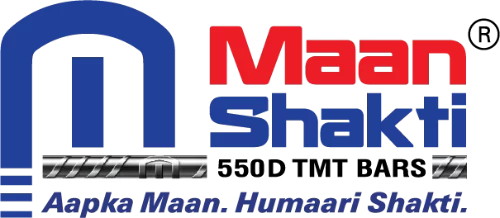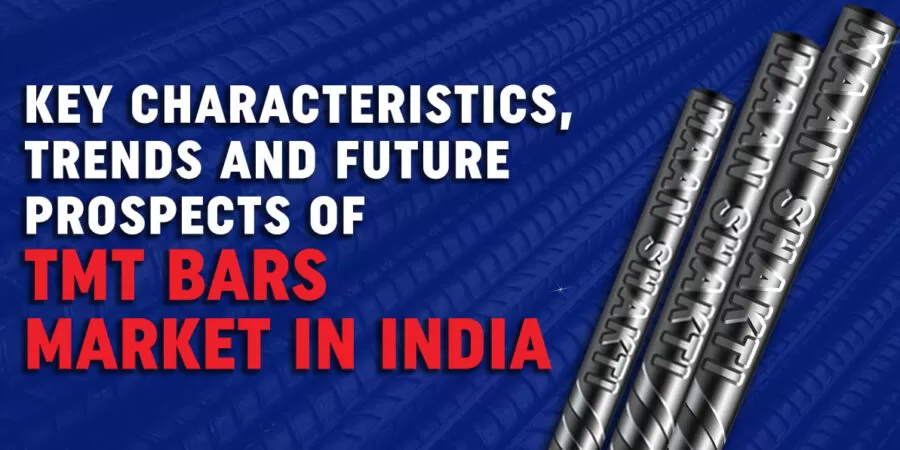The TMT bars industry has experienced many technological shifts and developments over the past years. However, steady market demand, low entry barriers, and limited competition have encouraged many industry players to venture into the industry and become market leaders. This article delves into identifying the industry’s key characteristics, trends, and prospects, offering engineers a unique opportunity to understand and contribute to the sector’s potential for sustained production.
Critical Characteristics of TMT Bars
Different Grades of TMT Bars
The thermomechanically produced TMT bars are available in different grades and shapes. Fe-415, Fe-500, Fe-550, and Fe-600 are the primary grades of TMT bars with different diameters ranging from 8mm to 32mm. The length of TMT bars ranges from 5.5 meters to 13 meters.
Weldability
A limited amount of carbon in TMT bars makes them sturdy and enhances weldability. The high degree of weldability helps to quickly join two ends of TMT bars, which assists in producing modern infrastructure. Due to the high weldability of TMT bars, architects can easily design complex constructional structures that become feasible to construct.
Ductility
Under thermomechanical treatment, the sudden heating and cooling make the TMT bars highly ductile. Heating the TMT bars at 1200 degrees temperature and suddenly cooling them through water treatment creates a solid outer layer and soft inner core. This property makes TMT bars easily bendable without deforming. However, bending beyond the elongation limit will break the TMT bars.
Corrosion Resistance
The presence of chromium, phosphorus, and copper makes TMT bars corrosion-resistant. The leading TMT bar producer, Maan TMT, uses these materials in limited amounts to ensure that TMT bars form a martensite outer layer that prohibits them from developing rust under the influences of heat, oxygen, and water. This unique property helps TMT steel suppliers in Kolkata, who play a crucial role in the industry’s supply chain, to stock high-volume TMT bars without the risk of rusting.
Earthquake Resistance
The rib structure in the outer layer of TMT bars helps to form a close bond with concrete. Moreover, the soft inner core and tough outer layer make the TMT bars highly ductile. Due to these qualities, when a seismic wave hits the TMT bars, the concrete passes the transmitted wave into the TMT bars, whose soft inner core helps to dissipate the wave through construction and extraction. Leading TMT bar producers strive to enhance the quality of these bars through various thermal and chemical influences.
Key Trends of the TMT Bars Market in India
Sustainability
Practising an environmentally friendly process to ensure sustainable production is a new trend in the era where environmental hazards have become a key concern. Leading TMT bar producers are shifting from a coal-based production system to electric arc furnaces to produce enough heat to prepare TMT bars. The shift has made production sustainable and reduced operations costs in the long run.
Modular Construction and Prefabrication
The increasing use of prefabricated and modular construction facilities is a new trend in the construction industry. The use of TMT bars plays a pivotal role in designing the skeleton structure of different prefabricated forms, which is a breakthrough. The process helps in the easy assembling of TMT bars in construction sites.
Stringent Quality Control
With the increasing demand for TMT bars across India, the need for effective quality control is rising. The engineers demand perfect calibration or chemicals, mechanical, and other properties to safeguard the construction from environmental impact. The adherence to BIS and ISO standards, which are internationally recognized quality management systems, must be perfect enough to ensure zero violations from stipulated quality benchmarks. Therefore, leading TMT bar producers put effort and time into evaluating qualities and following the norms to ensure the production of the best quality TMT bars.
Prediction of the TMT Steel Bars Market in India
The demand for TMT steel bars will rise in the future, extending the present growth trend. During the Covid-19 phase, the demand for TMT bars declined due to a halt in construction and production. However, the industry will grow at 3.50% CAGR from 2021 to 20230 while increasing output by 153.02 million tonnes.
The government of India has invested considerably in increasing the production of TMT bars in past years. The government’s investment in infrastructure, economy, and overall development will continue to grow in 2024 and the coming years. The leading TMT bars producers will leverage the potential for growth and superior market opportunities to expand the business and increase profitability. (source )
Conclusion
The growing economy and increasing market potential pave the way for the development of infrastructure and construction. Take advantage of the present and future market by investing in different construction projects. However, to ensure the sustainability of the projects, choose the certified and most efficient TMT bars from reputed TMT steel suppliers in Kolkata. The leading TMT bar producers follow modern technologies and processes to enhance the bar’s crucial qualities while maintaining all the benchmarks of eco-friendly production.


Leave a Reply